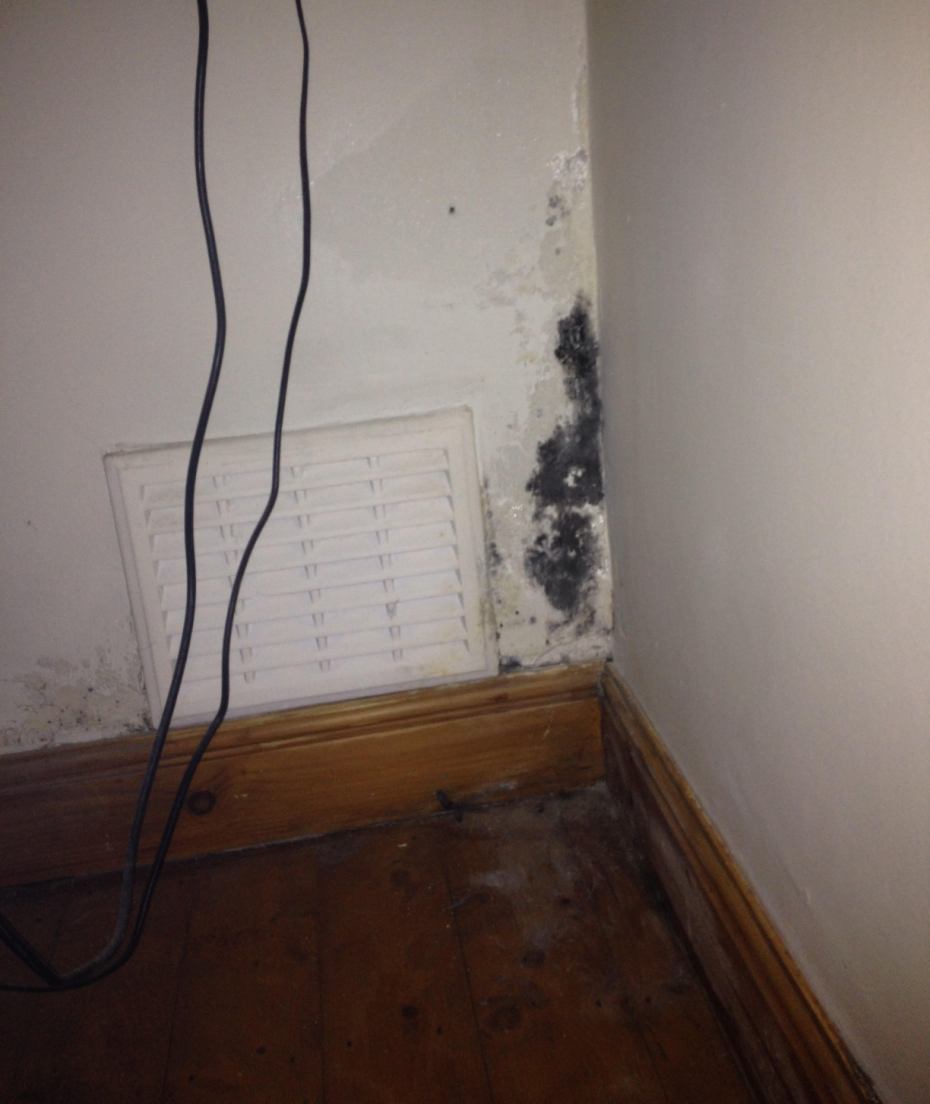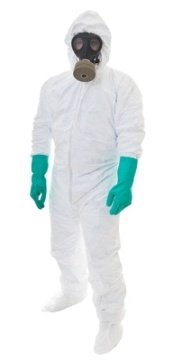Find a Mold Specialist Now
Click or Call, Toll-Free 24/7
DIY Mold Removal
Many homeowners are interested in DIY mold removal, some because they like doing home maintenance themselves, some because they want to save money. Sometimes do it yourself mold removal can save you money, but sometimes it can backfire on you. If you fail to remove the mold completely – something that's easy to do since mold often grows in hard-to-spot places like inside walls, under floorboards, and inside heating, ventilation and air conditioning ducts – it will just grow and spread and you'll soon have a mold problem on your hands again, perhaps a more extensive problem than you had initially.
 Mold on walls and floor
Mold on walls and floorWe'll give you some helpful tips for successful mold removal and we'll also let you know when it's best to call in a professional.
Before You Begin DIY Mold Removal
Before you begin, make sure you've located all areas of mold. Mold spreads easily, so if you find mold in one area of the home, there's a good chance there is more mold elsewhere. In addition, mold often grows in places where it's hard to see. You can learn more about searching for hidden mold. Later, we'll tell you how to get a free home inspection to help you make sure you've located all areas of mold.
Removing Mold
Choose a product that kills mold to remove mold from nonporous surfaces like metal, glass, and tile. It is often not possible to remove mold completely from porous materials such as carpet and drywall, so those things must be removed and replaced. Enclose moldy materials that must be discarded in heavy plastic bags before carrying them through the house so that you don't inadvertently spread mold to other areas of the home. If you're not sure if something can be cleaned or if you must discard it, consult a mold remediation professional for advice. To be safe, if in doubt, throw it out.
The exact process of mold removal varies depending on where it is, what caused it, and how much mold there is. An excellent book written specifically for homeowners that want to do it themselves is The Homeowners Complete Guide To Performing Mold Remediation. The link will take you to Amazon.

Safety Precautions
When removing mold from your home, it's important to take safety precautions so you aren't exposed to mold spores that might make you sick and so you don't inadvertently spread mold to other areas of the home. You'll need personal protective equipment, including an N-95 air-purifying respirator mask and disposable gloves. You can read more about the personal protective gear you'll need.
When Is DIY Mold Removal Not a Good Idea?
There are a few instances in which do it yourself mold removal is not advisable. The U.S. Environmental Protection Agency (EPA) recommends calling in a professional if:
- Mold develops after your home has been flooded with water that may have been contaminated with hazardous substances such as chemicals or sewage
- Mold covers an area greater than 10 square feet
- You think there is mold in your home's heating, ventilation and air conditioning system (special equipment is needed to clean HVAC ducts, which the average homeowner simply does not have access to, plus the duct work can be easily damaged if you don't know what you're doing)
- You are allergic to mold, have mold-related health problems, or have other health problems that might be made worse by exposure to mold (check with our doctor if you're not sure if it's safe for you to clean up mold)
Of course, some people just aren't very handy or just don't want to be bothered with the work. If you don't want to handle the mold removal yourself or if you are worried you don't know what you're doing, you can always call in a professional. If you'd like to try to do the work yourself but aren't sure you know how to do it, you can also get some free advice from a professional and we'll tell you how.
If You Need Help with Mold Removal
If you need help with mold removal, or if you're planning DIY mold removal but would like some free advice from a professional in the field, you can schedule a free inspection and in-home consultation with an experienced mold removal professional. He or she will visit your home, inspect for mold and help you make sure you've located all areas affected by mold, advise you about the work that needs to be done, and answer any questions you may have. You'll also get a written estimate for the cost of the job if you choose to hire professional help, but you're under no obligation to do so. To find experienced mold removal professionals offering free in-home consultations and mold inspections in your area, just follow the link.
Return From DIY Mold Removal To Our Removal Guide
Ref: EPA
Privacy Policy Terms and Conditions Accessibility Do Not Sell My Information Disclaimer Contact Us




